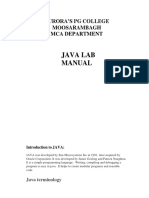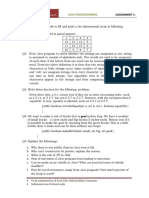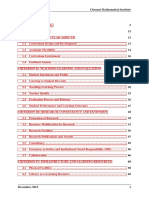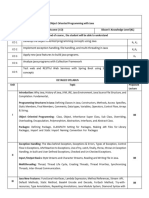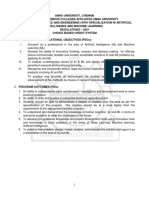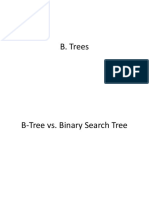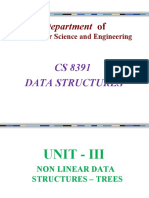0% found this document useful (0 votes)
440 views4 pagesB Tree Assignment
This document discusses B-Trees, which are self-balancing tree data structures used to efficiently store large ordered datasets. B-Trees allow for insertion, deletion, and search operations in O(Log(n)) time. The key points are:
1) B-Trees are multi-way trees where each node can have multiple children determined by the B-Tree's order, or maximum children per node.
2) Insertion works by splitting full nodes and moving keys up the tree until an open slot is found in a leaf node.
3) Deletion is more complex as keys can be removed from internal nodes, requiring rearrangement of children.
Uploaded by
Zeeshan AliCopyright
© © All Rights Reserved
We take content rights seriously. If you suspect this is your content, claim it here.
Available Formats
Download as PDF, TXT or read online on Scribd
0% found this document useful (0 votes)
440 views4 pagesB Tree Assignment
This document discusses B-Trees, which are self-balancing tree data structures used to efficiently store large ordered datasets. B-Trees allow for insertion, deletion, and search operations in O(Log(n)) time. The key points are:
1) B-Trees are multi-way trees where each node can have multiple children determined by the B-Tree's order, or maximum children per node.
2) Insertion works by splitting full nodes and moving keys up the tree until an open slot is found in a leaf node.
3) Deletion is more complex as keys can be removed from internal nodes, requiring rearrangement of children.
Uploaded by
Zeeshan AliCopyright
© © All Rights Reserved
We take content rights seriously. If you suspect this is your content, claim it here.
Available Formats
Download as PDF, TXT or read online on Scribd
/ 4


